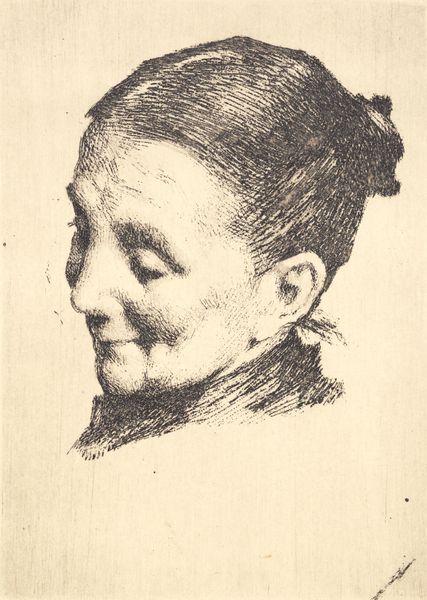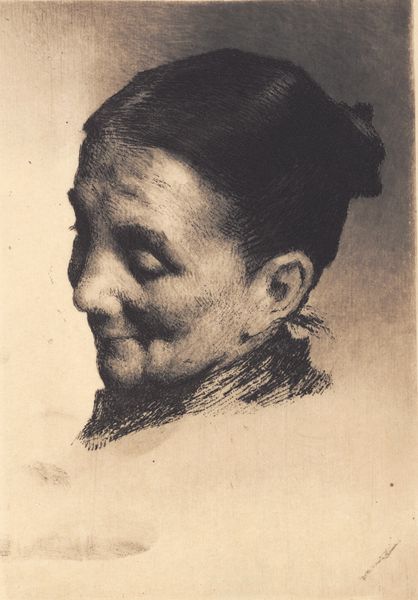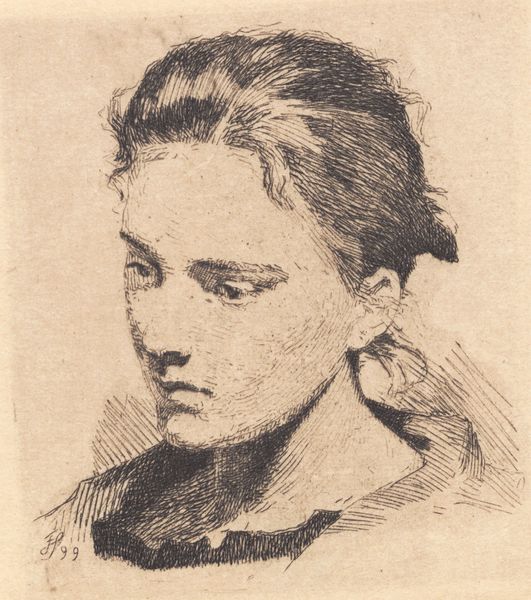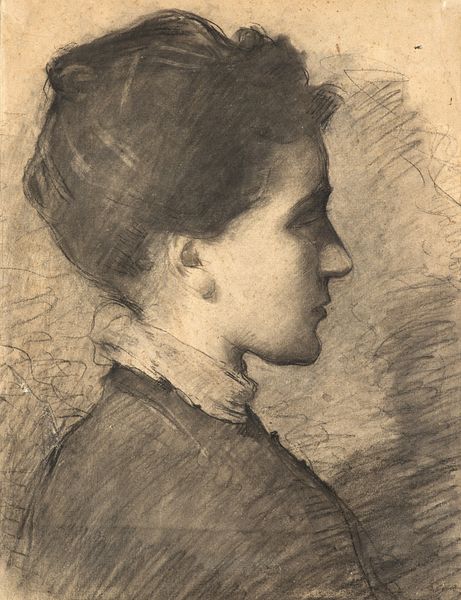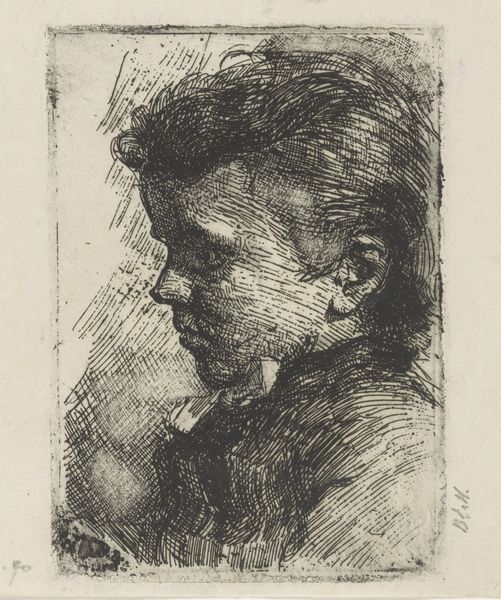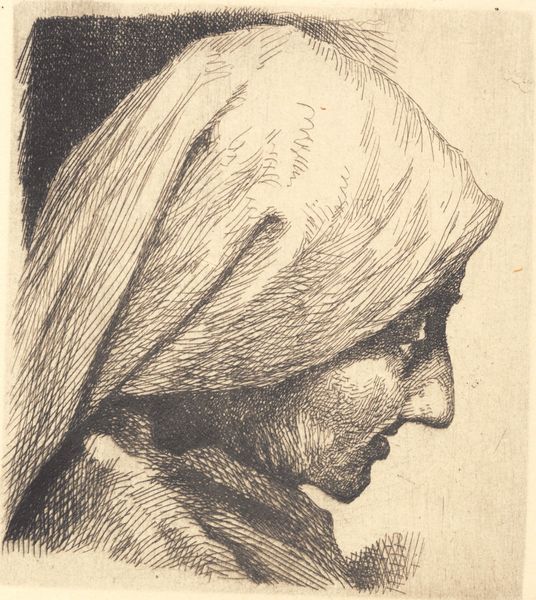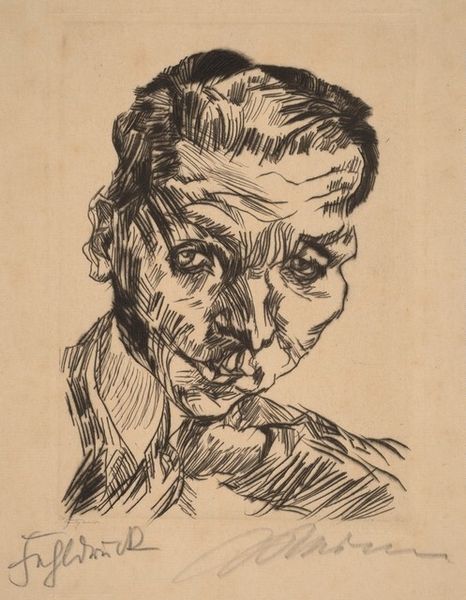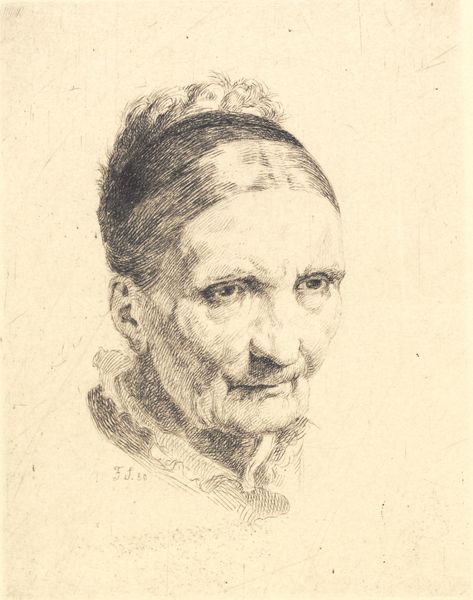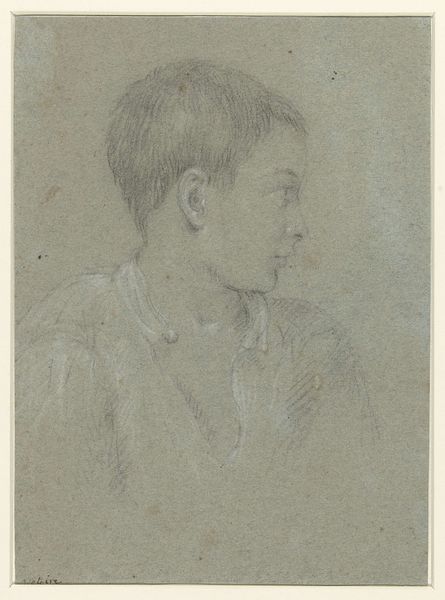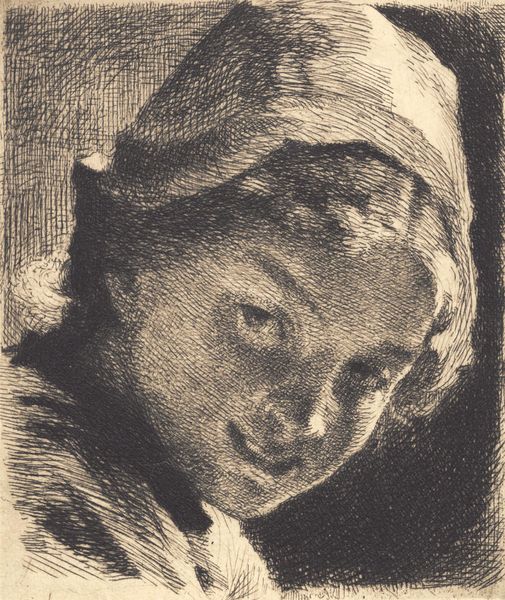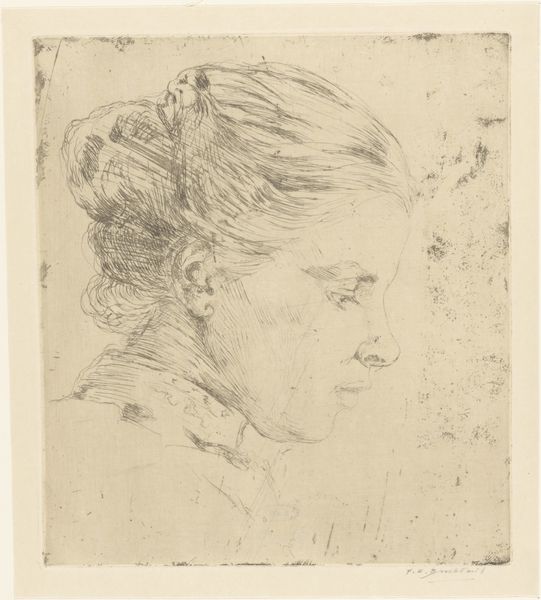
Hoved af en ældre kone, vendt mod venstre, med nedadrettet blik 1865 - 1917
0:00
0:00
drawing, print, etching
#
portrait
#
drawing
#
facial expression drawing
# print
#
etching
#
portrait drawing
Dimensions: 69 mm (height) x 52 mm (width) (plademaal)
Curator: Today, we’re looking at "Hoved af en ældre kone, vendt mod venstre, med nedadrettet blik," which translates to "Head of an elderly woman, facing left, with eyes downcast". It's an etching by Frans Schwartz, created sometime between 1865 and 1917, and resides here at the SMK. Editor: The overwhelming feeling is of quiet melancholy. The fine lines of the etching create this fragile image; she seems burdened, perhaps resigned. Curator: Frans Schwartz, though trained in genre painting, often turned his eye to portraits, particularly those of older subjects. This etching highlights a segment of the population frequently rendered invisible in public imagery. It is part of a bigger interest in representing people from different levels of society in Danish art from that time. Editor: There is an interesting parallel here, if we examine how Schwartz spotlights her aging and perhaps socially vulnerable status. This feels significant—it raises questions around visibility, representation, and who gets remembered, even in the realm of art. How do societal power structures dictate whose stories are worth telling? Curator: It certainly provokes such thought. Schwartz's technique, the etching, with its inherent reproducibility, suggests an attempt at democratizing representation. Printmaking at the time facilitated wider distribution, moving images beyond elite circles. Editor: The downward gaze contributes powerfully to her introspective quality. This etching captures a moment of contemplation; one wonders what thoughts occupy her mind, what experiences have shaped those lines etched upon her face, mimicking the very lines of the print. Curator: Absolutely. The piece reflects, on a wider level, how printmaking enabled artists to disseminate more empathetic and intimate views of daily life, making art a potentially progressive tool for social awareness. Editor: The level of detail he uses, however minimal, humanizes his subject to viewers like myself, and challenges us to look closer, fostering recognition and maybe solidarity across social lines. This has made me rethink how we consume art in our era and consider where representation falls short. Curator: A good question, well posed. It shows that the power of images made long ago, still have potent relevance in the present.
Comments
No comments
Be the first to comment and join the conversation on the ultimate creative platform.
